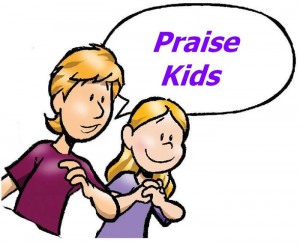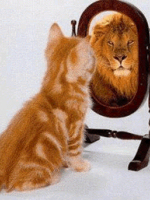Donations for the Cosmic Drop-Box
Mixing Traditions: [tag-tec]New Year’s Resolutions[/tag-tec], Spring Cleaning, and Boxing Day
 New Year’s is traditionally a time to dispense with our old habits and welcome the new. Spring Cleaning is the exercise of a very similar principle, but applied to the physical things in our life. The tradition of Boxing Day is new to us. We initially heard that it was similar to Spring Cleaning, but done at New Year’s.
New Year’s is traditionally a time to dispense with our old habits and welcome the new. Spring Cleaning is the exercise of a very similar principle, but applied to the physical things in our life. The tradition of Boxing Day is new to us. We initially heard that it was similar to Spring Cleaning, but done at New Year’s.
Turns out, this wasn’t quite accurate. There seem to be two theories about Boxing Day. The more common one is that hundreds of years ago, on the day after Christmas, members of the merchant class gave boxes of food, clothing, and/or money to those they employed, such as trades people and servants.
These gifts were given as an [tag-tec]expression of gratitude[/tag-tec] for service rendered in the same way people today get bonuses from their employer. These boxed gifts gave the holiday its name, Boxing Day. The other theory is that Boxing Day had its origins in that same era from a church practice of putting out collection boxes to receive donations for the poor on this day.
New Year’s Spring Boxing Day
This year, one of the [tag-tec]resolutions[/tag-tec] Beth and I made was to only keep things in our lives that still “fit” in every sense of that word. We want to eliminate the distraction of having things clutter our space that are no longer relevant, appropriate, meaningful, or pleasing.
Those of you who know us will remember that we moved about a year and half ago, and we did a major purging during that move. So this New Year’s day we found that most of what needed to go was clothing from our closets.
Few of these were actually worn out and that, combined with the ruthless pruning of our wardrobe, generated four large bags of serviceable clothes to be donated to a local charity that maintains a drop-box at the community center near our house. So in this way it seemed that we were also expressing some of the tradition of Boxing Day by giving charitably to those in need.
Out With the Old to Make Room for the New
Reflecting on this process brought my awareness to some similarities between our physical and mental wardrobes. My musing stimulated this question: If I can clean out my physical wardrobe of those items that no longer fit, feel right, or express who I have become and am becoming, why not do the same with my mental wardrobe of beliefs, concepts, self-image, etc.?
I many ways these internal and external wardrobes serve similar functions. One function they both serve is to protect us from the elements. My physical wardrobe living in Southern California may be quite different from someone who lives in Fairbanks, Alaska, but the clothes we buy protect us from the weather and help us do what we want in both places.
The mental wardrobe of beliefs, concepts, and self-image that I bought into growing up in my family, community, and social environment may be very different than the mental wardrobe you acquired during your infancy, adolescence, and beyond. But, in a similar way, they have served to protect us from emotional and psychological danger and help us do as we want as well.
Another function performed by both our physical and mental wardrobes is to convey how we see ourselves, influence how we are seen, and to create a sense of social identity so that we can fit into the communities we want to be part of.
The Clothes Make the Man, and Woman.
Mark Twain said: “Clothes make the man. Naked people have little or no influence on society.”
Well, Lady Godiva may disagree, but wouldn’t it be great if we could just as easily bag up the emotional and psychological outfits in our mental closet that no longer fit or serve us well? And what if all we had to do to get rid of them was to simply drop them into a universal energy recycling bin somewhere? Just send them back to the great vibrating pool of energy where they’d dissolve back into that raw material that all concepts and stuff comes from in the first place.
 Where might we find such a drop-box? I imagine one a place in space like the Crab Nebula I’ve seen in pictures from the Hubble space telescope, but somehow in the middle there’s a deposit shoot with a big metal handle you can pull down. And when I do it opens into the all-thing-ness of subspace.
Where might we find such a drop-box? I imagine one a place in space like the Crab Nebula I’ve seen in pictures from the Hubble space telescope, but somehow in the middle there’s a deposit shoot with a big metal handle you can pull down. And when I do it opens into the all-thing-ness of subspace.
Then I imagine standing in front of this cosmic drop-box, and being able to gather up the fabric of all of those ill fitting beliefs and self-images that are woven throughout the synapses of my mind, being able to push them into the open shoot, and then letting go of the handle.
I could even picture myself floating there for a while, enjoying a space of gratitude for being able to clear room in my mental closet. Room that will allow me to attract the beliefs and wisdom that will better help me express who I’ve become, and am becoming at this point in my life. And grateful for having created the freedom and flexibility that allows for creativity in choosing how I might express my true self in the coming year.
Change is for the Good
In thinking about this I realize that life is an ongoing process of outgrowing, shedding, discovering and adopting. I’ve shed many of the mental patterns I once had. They come and go as the scenery of my [tag-tec]life’s journey[/tag-tec]. And, as with my physical wardrobe, sometimes I seem to cling to old mental clothing far longer than it serves me.
So, if life is a process of becoming, then I guess one kind of death is when we no longer shed our outmoded ways of thinking to make way for new ones. It’s when we stop refreshing our mental wardrobe.
For these reasons I enjoyed our New Year’s Spring Boxing Day. Now if I can just keep this awareness in mind for the rest of the year…











